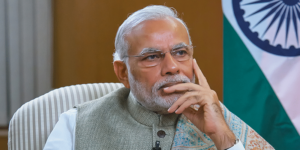
Digital public infrastructure must be built to create population-scale systems, and India has shown to the rest of the world that we can continue to build digital open infrastructure on top of which private innovation can thrive, said Pramod Varma, Co-founder, FIDE and Chief Architect, Aadhaar and India Stack.
“That jugalbandi (duet) between an open playground and thousands of entrepreneurs creating new opportunities on top of it is a brilliant combination by which you can push economic development. It is both innovative and inclusive,” Varma told a packed audience during a fireside chat at DevSparks 2024—YourStory’s inaugural developer summit.
Varma pointed out that while UPI is open, innovation is private. Similarly, ONDC is open, yet innovation remains private.
Echoing a statement by Microsoft Chairman and CEO Satya Nadella, Varma said India is demonstrating to the world that it can facilitate public rails while fostering private innovation.
Citing an example of digital payments growth, he emphasised that the country has surged to processing 500 million digital payments, thanks to United Payments Interface (UPI)—a significant leap from less than 50 million in 2016.
He explained that it’s economically unfeasible for companies to operate in rural environments unless the costs of innovation, compliance, customer onboarding, and operations are reduced. If costs aren’t reduced, entrepreneurs will settle for serving the top portion of India—around 50 to 80 million people—while the majority of the population remains in the informal economy.
“Ability to access product, service, and information equitably is shown by technology-led democratisation. It cannot always be done for free. You have to make the access ways open but create innovation so that people can sustain new ways of innovation, saving, lending, etc.,” Varma noted.
First principle thinker
“One thing I learned is that if you want to think, you have to think from first principles. You have to ask all the bold questions that experienced people refuse to ask,” Varma said as he explained how UPI was built. He added that the team began with the premise that individuals should be able to send money as effortlessly as sending an instant message.
“My real forte has been designing from the ground up. I was always a first principles thinker, I think from… core computer science principles and design from nothing,” Varma shared.
The chief architect of Aadhaar and India Stack also spoke about the Aadhaar journey.
“Designing what works at scale is very different from trying to scale something that works…With Aadhaar, we learned the art of coding policies as code or the rules as code. Everything had to be codified,” he noted, adding that they had to create tech that was resilient to India’s craziness.

Edited by Suman Singh










